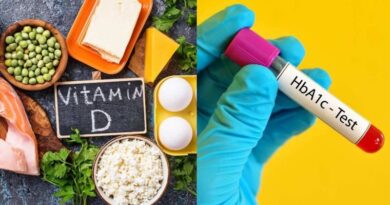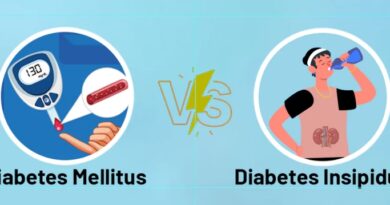Preventing and Treating High Blood Pressure If You Have Diabetes
In today’s fast-paced world, the prevalence of chronic diseases such as Type 2 diabetes and high blood pressure (hypertension) has reached alarming levels. These conditions not only affect millions of individuals worldwide but also often coexist, leading to a complex relationship that can significantly impact health. Understanding the implications of high blood sugar levels, the symptoms of both diabetes and hypertension, their connections, potential complications, and effective treatment options is crucial for anyone navigating these health challenges.

What is High Blood Sugar?
High blood sugar, or hyperglycemia, occurs when the glucose levels in the blood rise above normal. In individuals with Type 2 diabetes, this often results from the body’s ineffective use of insulin. Insulin is the hormone responsible for regulating blood sugar levels, and when it’s not functioning properly, blood glucose can increase. Prolonged periods of high blood sugar can lead to various health problems, including nerve damage, kidney issues, and cardiovascular diseases.
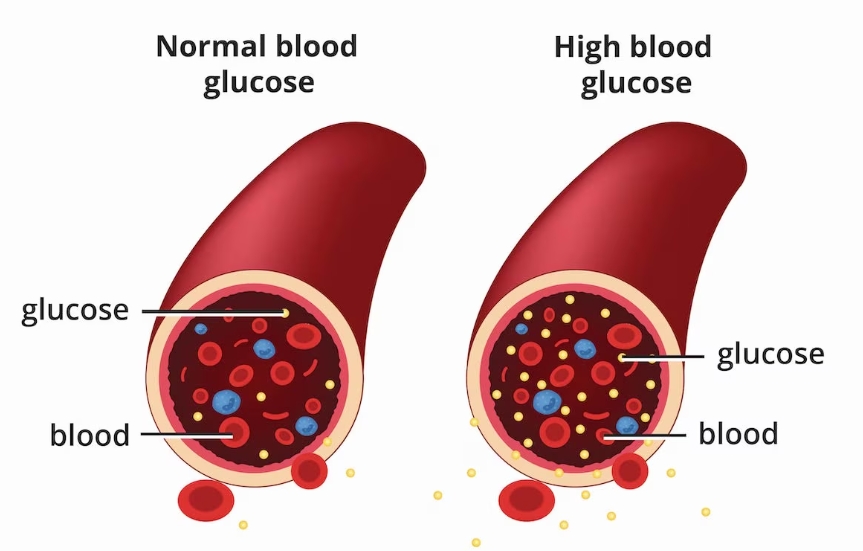
Symptoms of High Blood Sugar
Recognizing the symptoms of high blood sugar is essential for effective management. Common signs include:
- Increased Thirst and Frequent Urination: Elevated glucose levels cause the kidneys to work overtime, leading to increased urination and subsequent dehydration.
- Fatigue: The body’s inability to utilize glucose properly can leave individuals feeling unusually fatigued.
- Blurred Vision: High sugar levels can affect the shape of the lens in the eye, leading to transient vision problems.
- Headaches: Fluctuating sugar levels may cause recurrent headaches.
- Slow-Healing Wounds: High glucose levels can impair circulation and the body’s natural healing processes.
If high blood sugar continues unchecked, it can lead to more severe complications such as diabetic ketoacidosis—a potentially life-threatening condition—and long-term damage to various organs.
The Connection Between Diabetes and Hypertension
Diabetes and hypertension are closely linked in various ways, making management of both critical for preventing significant health risks. Individuals with Type 2 diabetes have a higher likelihood of developing high blood pressure due to several factors, including:
- Insulin Resistance: Insulin resistance can lead to increased fat accumulation around the abdomen, which is associated with higher blood pressure.
- Kidney Dysfunction: Diabetes can damage the kidneys, impairing their ability to regulate blood pressure effectively.
- Increased Inflammation: Elevated blood sugar levels can lead to inflammatory processes that affect blood vessel function and increase blood pressure.
Managing both conditions is imperative, as they often exacerbate each other, leading to a cycle of health complications. High blood pressure can result in more severe complications for people with diabetes, such as heart disease, stroke, and chronic kidney disease.
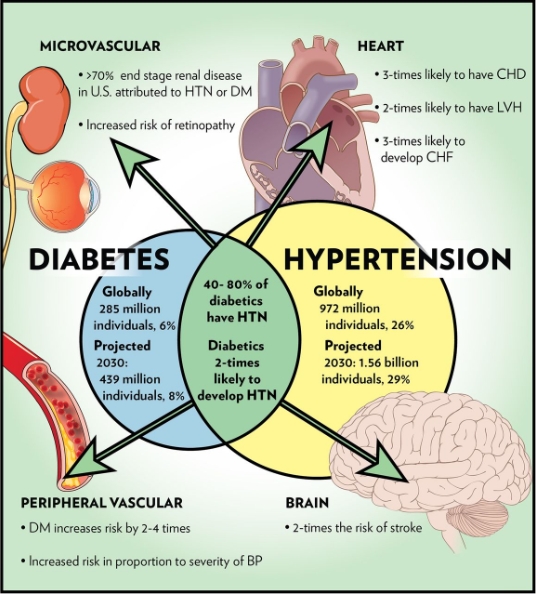
Complications and Risks Associated with Diabetes and Hypertension
Diabetes and high blood pressure (hypertension) are two prevalent health conditions that frequently coexist. Individuals living with diabetes are at a significantly greater risk of developing high blood pressure, which in turn increases their likelihood of experiencing severe cardiovascular issues such as heart attacks and strokes. Understanding the connection between these two conditions and implementing effective management strategies is essential for maintaining overall health.
Research indicates that approximately two-thirds of people with diabetes also have high blood pressure. The interplay between these conditions not only exacerbates their individual effects but also heightens the risk of atherosclerotic cardiovascular disease (ASCVD). This means that managing both diabetes and hypertension is imperative for reducing the overall risk of associated complications.
People with diabetes often experience higher blood sugar levels, which can lead to inflammation and damage within blood vessels. Simultaneously, high blood pressure exerts excessive stress on these vessels. Over time, this combined impact can result in narrowed arteries, limiting blood flow to vital organs and potentially leading to issues such as kidney problems, erectile dysfunction, or more severe cardiovascular events.
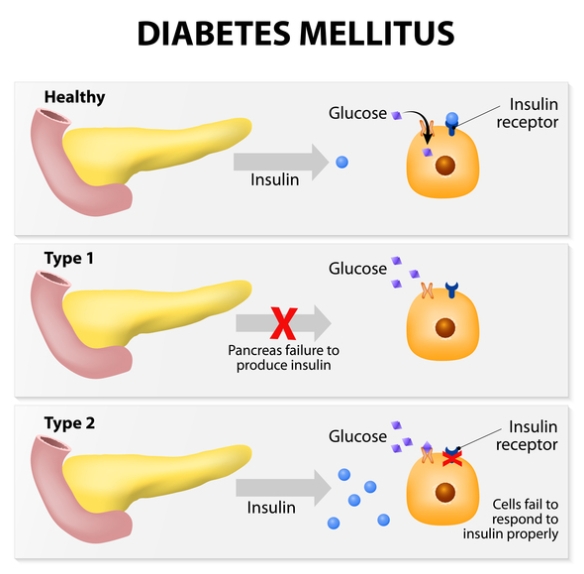
Navigating the dual challenges of diabetes and hypertension involves understanding the potential complications. Uncontrolled blood sugar and high blood pressure can lead to:
- Cardiovascular Disease: The risk for heart attack and stroke significantly increases for individuals with both conditions. Diabetes affects how the blood vessels function, increasing arterial stiffness and blood pressure.
- Kidney Damage: Diabetic nephropathy, a common complication of diabetes, can worsen with hypertension, leading to renal failure and the potential need for dialysis.
- Nerve Damage: Known as diabetic neuropathy, this condition can impair sensations and lead to irreversible damage, especially in the feet.
- Eye Problems: The risk of diabetic retinopathy, cataracts, and glaucoma increases significantly with poorly managed diabetes and hypertension.
Awareness of these complications reinforces the importance of lifestyle and dietary choices, and medical interventions to manage both conditions effectively.
Treatment Options: Managing Hypertension in Diabetes
If you have diabetes and are diagnosed with high blood pressure, there are several effective strategies you can incorporate into your daily routine to manage your health effectively. Here are six vital methods to consider:

1. Keep a Healthy Weight
Maintaining a healthy weight is fundamental in managing both diabetes and high blood pressure. Even a small amount of weight loss (5% to 10% of body weight) can help lower blood pressure and improve blood sugar control.
Strategies:
- Track your food intake to identify and eliminate high-calorie, low-nutrient foods.
- Incorporate regular physical activity into your routine, aiming for at least 150 minutes of moderate exercise weekly.
2. Reduce Salt Intake
Limiting salt consumption is crucial for controlling blood pressure. High sodium intake can lead to fluid retention and elevated blood pressure levels.
Strategies:
- Aim for less than 1,500 mg of sodium per day.
- Read food labels carefully to avoid hidden sodium in processed foods.
3. Follow the DASH Diet
The Dietary Approaches to Stop Hypertension (DASH) diet emphasizes whole foods high in nutrients that help reduce blood pressure. This diet includes plenty of fruits, vegetables, whole grains, and lean proteins while limiting saturated fats and sugars.
Strategies:
- Incorporate foods rich in potassium, magnesium, and calcium, such as bananas, spinach, and low-fat dairy.
- Prepare meals at home, focusing on fresh ingredients to mitigate unhealthy components found in fast food.
4. Keep Active
Staying physically active is integral to controlling both blood sugar and blood pressure. Regular exercise can help improve insulin sensitivity and lower blood pressure.
Strategies:
- Engage in aerobic activities like walking, swimming, or cycling, preferable for at least 30 minutes on most days.
- Include strength training exercises at least twice a week to enhance overall health.
5. Quit Smoking
Smoking has adverse effects on blood vessels and can exacerbate both diabetes and hypertension. Quitting smoking dramatically reduces the risk of complications and improves overall health.
Strategies:
- Seek support from healthcare professionals and smoking cessation programs.
- Consider medications or therapies designed to assist with quitting smoking.
6. Reduce Alcohol Intake
Excessive alcohol consumption can increase blood pressure and negatively impact blood glucose control. It’s crucial to regulate intake.
Strategies:
- Limit alcohol to one drink a day for women and two drinks a day for men.
- Opt for low-calorie beverages and measure portions.

The intersection of Type 2 diabetes and high blood pressure poses serious health challenges. Recognizing the symptoms, understanding the connection, and being proactive in managing both conditions is essential. By implementing lifestyle changes and collaborating closely with healthcare providers, individuals can significantly lower their risk of complications and improve their overall wellbeing. The journey toward better health begins with informed choices and a commitment to living a healthier life.
Taking control now can pave the way for a healthier, happier future. Don’t hesitate to reach out to your healthcare team for personalized guidance tailored to your situation.

